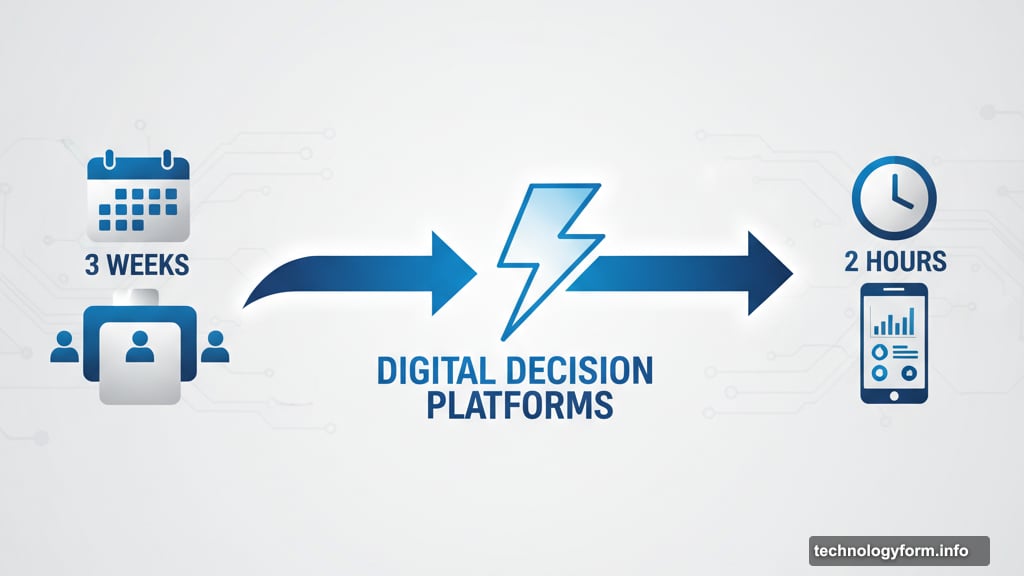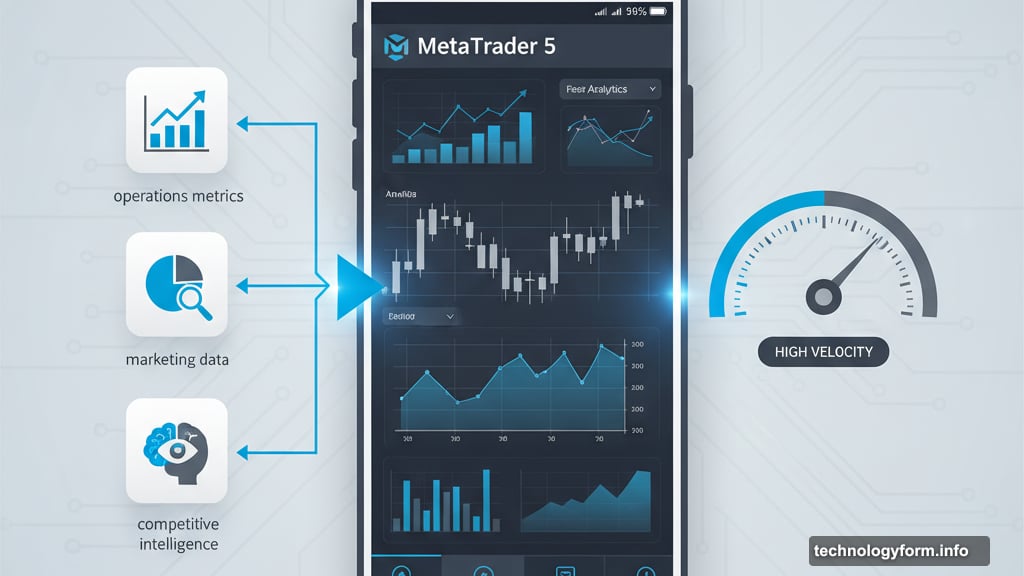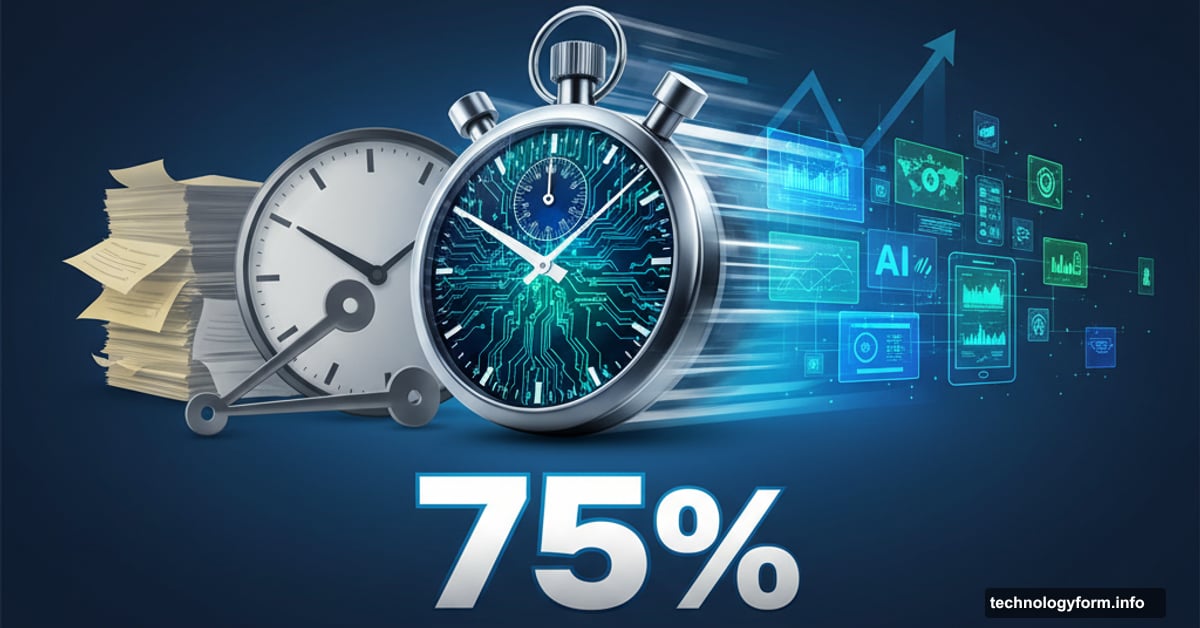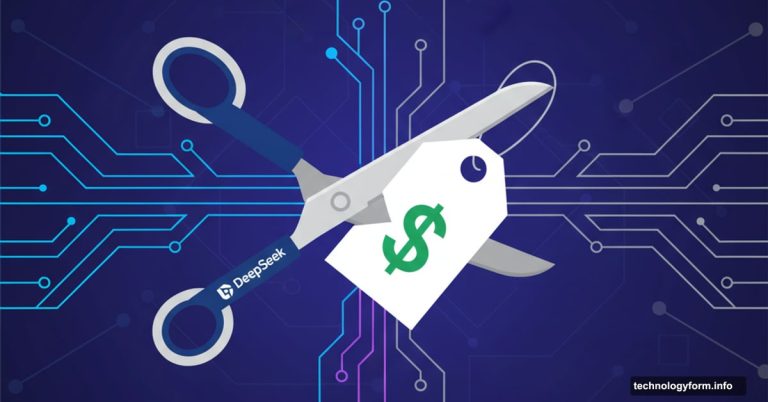Your Business Decisions Just Got 75% Faster. Here’s the Tech Behind It
You’re drowning in decisions. Market shifts happen while you’re still analyzing last week’s data. Your competitors seem to move with supernatural speed.
Meanwhile, you’re stuck in meeting cycles that kill momentum. Every hesitation costs revenue. Every delayed choice hands opportunities to faster rivals.
Digital decision-making tools changed the game completely. Companies using tech-driven platforms now make choices in hours that once took weeks. That speed advantage compounds daily, creating gaps traditional decision-makers can’t close.
The Technology Actually Driving Results
AI gets all the headlines. But three other technologies are quietly revolutionizing how smart organizations make decisions.
First, workforce intelligence software cuts data collection time in half. Instead of wasting days gathering information, teams get instant access to relevant insights. Plus, decision accuracy jumps significantly when people work from complete, current data.
Second, real-time collaborative platforms killed endless meeting marathons. Teams contribute simultaneously from anywhere. Voting tools bring transparent consensus without painful debate cycles. Decisions that once required three meetings now happen in thirty minutes.
Third, mobile decision apps capture insights the moment they strike. Voice logging means brilliant ideas don’t vanish during commutes or coffee breaks. Your best thinking happens everywhere, not just at desks.
Trading Platforms Show What’s Possible
Financial professionals need split-second market responses. Platforms like MetaTrader 5 deliver sophisticated analytics straight to mobile devices. Traders make instant choices grounded in comprehensive market intelligence instead of gut feelings.
That same capability now extends beyond finance. Operations managers track production metrics in real-time. Marketing teams pivot campaigns based on live performance data. Strategic leaders monitor competitive moves as they happen.
Speed matters. But speed without accuracy just means failing faster. Modern platforms combine both, turning complexity into clarity exactly when decisions matter most.
Virtual Collaboration Beats Physical Meetings
Remote work exposed something important. Traditional meeting rooms actually limited decision quality. Geography, scheduling conflicts, and distraction created bottlenecks that slowed everything down.

Virtual decision rooms changed that equation. Teams tackle complex problems in distraction-free digital environments. 3D data visualization makes multi-dimensional challenges comprehensible in ways spreadsheets never could.
Plus, time zones stopped mattering. Distributed teams stay synchronized despite scattered locations. Asynchronous contribution means people add input when they’re sharpest, not just when meetings get scheduled.
Here’s what surprises people most. Digital environments often produce better decisions than face-to-face meetings. Why? They eliminate groupthink pressure and give quieter voices equal weight.
Your Employees Know More Than Consultants
Companies waste fortunes hiring external experts while ignoring internal wisdom. Crowdsourcing platforms tap employee knowledge that expensive consultants lack entirely.
Customer input integration ensures decisions reflect actual market reality. Not assumptions. Not predictions. Real feedback from people who buy your products and use your services.
Expert networks deliver specialized knowledge exactly when needed. No retainers. No long-term commitments. Just precise expertise for specific decisions, then move forward.
Deloitte found that 60% of manufacturers partnered with technology vendors to deploy lean 2.0 technologies in 2023. That’s not accidental. Smart companies realized vendors became indispensable allies for modernizing decision processes.
Behavioral Science Stops Mental Traps
Digital tools alone won’t save you from human psychology. Confirmation bias, anchoring effects, and groupthink still derail decisions even with perfect data.
Modern platforms now embed behavioral science directly into decision frameworks. Teams get prompted to consider alternative viewpoints. Systems flag when groups rush toward premature consensus. Algorithms detect pattern-matching that might miss emerging trends.
This matters more than most leaders realize. Poor decisions rarely stem from insufficient information. They come from cognitive blind spots that technology can help identify and overcome.
Four Decision Categories Need Different Approaches
David Snowden’s Cynefin Framework breaks decisions into four types: Core, Complicated, Complex, and Chaotic. Not every choice deserves the same rigor.
Core decisions follow clear cause-and-effect patterns. Technology automates these entirely. Complicated decisions need expert analysis but have knowable solutions. Complex decisions require experimentation and adaptation. Chaotic decisions demand rapid response over careful planning.

Smart organizations match tools to decision types. They don’t waste sophisticated analysis on routine choices. They don’t rush complex strategic decisions that need deeper exploration.
The Four R’s framework adds another layer: Results, Resources, Restrictions, and Risk. This helps determine appropriate effort levels before diving in.
Results Come Fast
Most organizations see measurable speed improvements within three to six months. Decision velocity jumps first. Accuracy gains follow as teams learn to leverage new capabilities.
That timeline matters. Market conditions won’t wait for slow implementations. Competitors move now. Customer expectations shift constantly. Regulatory changes arrive without warning.
Companies hesitating on digital decision tools don’t just miss opportunities. They actively fall behind rivals who adapted faster. That gap keeps widening every quarter.
The Real Advantage Isn’t Technology
Here’s what nobody talks about. Digital platforms don’t make decisions. People do. Technology just amplifies human judgment while eliminating friction and delay.
The winning advantage goes to organizations that combine technological capability with smart decision-making culture. Tools enable speed. Training ensures quality. Culture encourages action over analysis paralysis.
Success won’t belong to whoever hoards the most data. It goes to those who transform information into superior choices faster than competition can react.
Your competitors already made this shift. They’re deciding faster, executing quicker, and pulling ahead daily. Every week you delay adopting these tools, that gap grows harder to close.
The question isn’t whether digital decision-making tools deliver value. They absolutely do. The real question is whether you’ll adopt them before falling too far behind to catch up.






